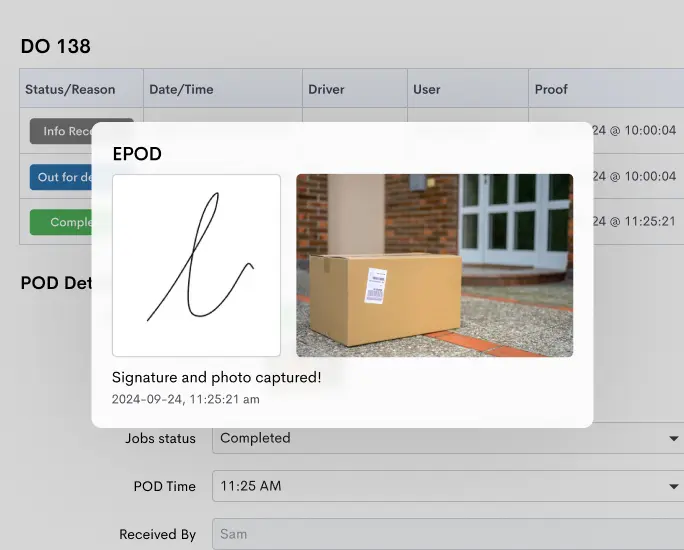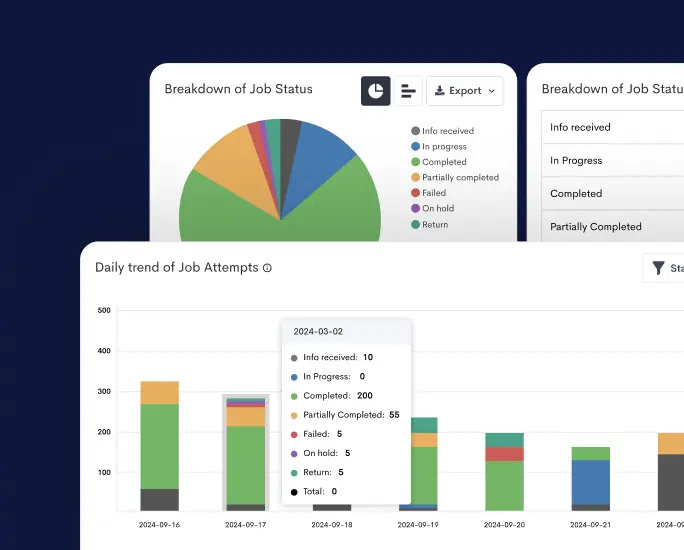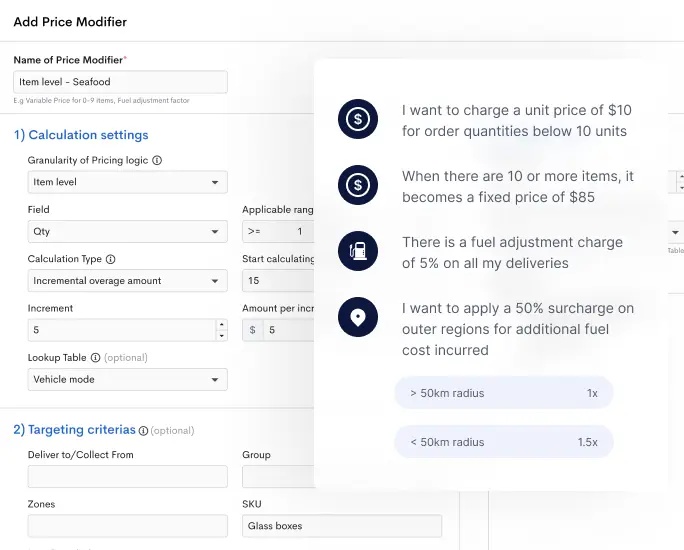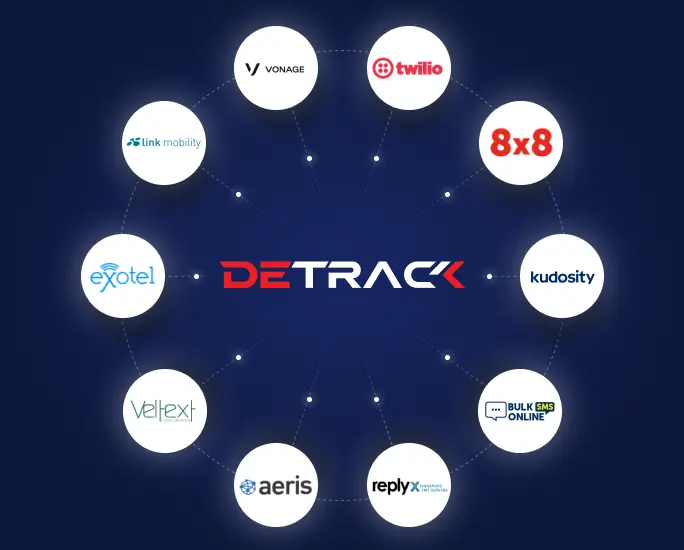A product’s journey from warehouse to doorstep is the final, and often most critical, movement. This journey is governed by two powerful, interconnected disciplines: route planning and route optimization.
For businesses managing logistics, fleets, and transportation, mastering these disciplines isn’t just a matter of operational efficiency. It’s a fundamental pillar of profitability, customer satisfaction, and competitive edge.
Route planning vs. route optimization: two sides of the same coin
While the terms are often used interchangeably, understanding the distinction between route planning and route optimization is the first step toward mastering logistics efficiency.
What is route planning?
Route planning is the foundational process of determining which stops a vehicle will make and in what general order. It’s the strategic high-level map. Think of it as the “what” and “where.”
- Manual route planning: This involves a dispatcher using their knowledge, experience, and basic maps to sequence a list of deliveries. For a small number of stops in a familiar area, this can be effective, but it quickly becomes unmanageable and inefficient as complexity grows or plans change at the last minute.
- Basic digital planning: Using tools like Google Maps to plot multiple stops falls into this category. It provides a visual path but lacks the intelligence to account for complex constraints.
At its core, route planning answers the question: “What is the list of addresses we need to hit today?”

What is route optimization?
Route optimization is the advanced, intelligent layer applied on top of route planning. It’s the “how” and “when.” Optimization software uses sophisticated algorithms to process a vast array of variables, including traffic patterns, road restrictions, vehicle capacity, driver shifts, and delivery time windows, to calculate the most efficient sequence of stops.
The goal of optimization isn’t just to find a route; it’s to find the best possible route according to your specific business objectives, whether that’s minimizing fuel costs, maximizing the number of deliveries per day, or ensuring all time-sensitive deliveries are made on time.
How they complement each other
You cannot have effective optimization without a plan, and a plan without optimization is inherently inefficient. They work in a powerful synergy:
- The plan is the input: You provide the optimization software with your plan: the list of deliveries, addresses, and constraints.
- The optimization is the engine: The software crunches the data, simulating thousands of potential sequences and paths in seconds.
- The optimized route is the output: You receive a dynamic, data-driven route that tells your drivers not only where to go, but the best order to go in, saving time, money, and resources.
For a deeper explanation of this crucial distinction, you can read our blog on route planning vs. optimization here.
Why route planning and optimization matter in logistics and fleet management
Pairing intelligent routing with the deep knowledge and skills of your dispatchers leaves money on the table and directly impacts your bottom line.
1. Reduces fuel and operational costs
Fuel is one of the largest variable costs for any fleet. Inefficient routes lead to unnecessary mileage, which directly translates to higher fuel bills. Optimization eliminates detours, reduces idling time in traffic, and ensures drivers are taking the most direct paths possible. Furthermore, it lowers vehicle wear-and-tear, reducing long-term maintenance costs.
2. Improves delivery efficiency and driver productivity
An optimized route allows a driver to complete more deliveries in the same amount of time or the same number of deliveries in less time. This directly boosts productivity. Dispatchers spend less time manually figuring out routes and more time managing exceptions and providing customer support. The entire operation becomes leaner and more agile.
3. Enhances customer satisfaction with reliable ETAs
Customers expect Amazon-level transparency. They want to know precisely when their delivery will arrive. Static routes cannot account for real-time traffic, leading to missed delivery windows and frustrated customers. Dynamic optimization provides accurate Estimated Times of Arrival (ETAs) and allows for proactive communication via SMS or email, dramatically improving the customer experience.
4. Supports sustainable logistics and reduced emissions
Corporate social responsibility is no longer optional. By reducing total distance traveled and idle time, optimized routing directly lowers your fleet’s carbon footprint. This is a powerful way to contribute to environmental goals, comply with increasing regulations, and appeal to eco-conscious consumers and partners.
Common challenges in route planning
Transitioning from a reactive to a proactive routing strategy is not without its hurdles. Recognizing these challenges is the first step to overcoming them.
- Manual or static route creation: Relying on spreadsheets and “the way we’ve always done it” is the single biggest barrier to efficiency. It’s time-consuming, prone to human error, and completely inflexible when things change.
- Incomplete or inaccurate data: As mentioned, poor data quality is a primary point of failure. If your customer database has errors, your routes will too.
- Lack of integration with dispatch or fleet systems: When your routing software operates in a silo, separate from your order management, ERP, or telematics systems, it creates manual work and data gaps. True efficiency comes from a seamless flow of information.
- Resistance to technology adoption or process changes: Drivers and dispatchers who are used to their old methods may be skeptical of new technology. Without easy to use tools and the proper buy-in and training, even the best software can fail.
Best practices for logistics and fleet teams
Overcoming these challenges and achieving routing excellence requires a strategic approach. Here’s a practical playbook for your team.
1. Adopt dedicated route optimization software
Look for a platform that goes beyond simple mapping and offers true dynamic optimization based on your unique business rules. The right software will handle the complex calculations for you and even automatically factor in things like driver break times, freeing your team to focus on higher-value tasks.
2. Leverage historical and live data for smarter planning
Don’t just plan for today; learn from yesterday. Use historical data on traffic patterns, delivery times, and driver performance to inform future routes. Combine this with live data feeds for traffic, weather, and even last-minute order changes to create routes that are not only optimized on paper but also in the real world.
3. Train drivers and dispatchers on tech tools
Technology is only as good as the people using it. Invest in comprehensive training for both dispatchers who create the routes and drivers who execute them. Show them how the technology makes their jobs easier: less time on the road for drivers, less stress and chaos for dispatchers. Their buy-in is critical for success.
4. Continuously monitor and refine routing performance
Route optimization is not a “set it and forget it” process. Use the reporting and analytics features of your software to track key performance indicators (KPIs) like on-time delivery rate, miles per gallon, stops per hour, and cost per delivery. Regularly review this data to identify areas for continuous improvement.

The road to smarter logistics starts here
In the demanding world of logistics and fleet management, sophisticated route planning and optimization are no longer luxury items; they are essential tools for survival and growth. The benefits are simply too significant to ignore.
The journey from manual, inefficient processes to an automated, data-driven strategy begins with a single step: embracing the technology that makes it possible. By understanding the key factors, anticipating the challenges, and implementing the best practices outlined in this guide, your business can navigate the complexities of modern delivery with confidence and precision.
It’s time to stop guessing and start optimizing. Take the first step towards transforming your delivery operations and experiencing the benefits firsthand.
Ready to optimize your routes and boost your bottom line? Book a Demo or start your fully featured free trial with Detrack today!
Frequently asked questions about route planning and optimization
What is route planning in logistics?
Route planning in logistics is the process of defining a path for a vehicle to take to complete a set of deliveries or pickups. It involves determining which stops to make and the general order to make them in.
What’s the difference between route planning and route optimization?
Route planning is about creating a route, while route optimization is about finding the best possible route. Planning is strategic (what stops?), while optimization is tactical (what’s the most efficient sequence and path considering all constraints like time, traffic, and capacity?).
How does route optimization software work?
It uses complex algorithms to analyze all possible combinations of stops, sequences, and paths. It processes variables like delivery windows, vehicle capacity, driver hours and break times to calculate the most efficient route in seconds, a task that would be impossible for a human to do manually at scale.
Why is route planning important for fleet management?
Effective route planning is crucial for fleet management as it directly controls major cost centers like fuel and labor. It improves asset utilization (vehicles and drivers), enhances safety by reducing unnecessary driving, and provides the data needed for strategic decision-making.
Can Detrack help with route optimization?
Yes, absolutely. Detrack provides dynamic route optimization software designed specifically for logistics and delivery businesses. It automates the planning process, creates the most efficient routes based on your specific needs, and provides tools for electronic proof of delivery and real-time vehicle tracking, all in one integrated platform.
What are the main challenges in route planning?
The main challenges include reliance on inefficient manual methods, poor data quality (like incorrect addresses), a lack of integration with other business systems, and internal resistance to adopting new technologies and processes.
What industries benefit most from route planning software?
While any business with a mobile workforce can benefit, industries with complex delivery and service models see the greatest ROI. This includes e-commerce and retail delivery, food and beverage distribution, field services (technicians, repairs), third-party logistics (3PL) providers, and courier services.











